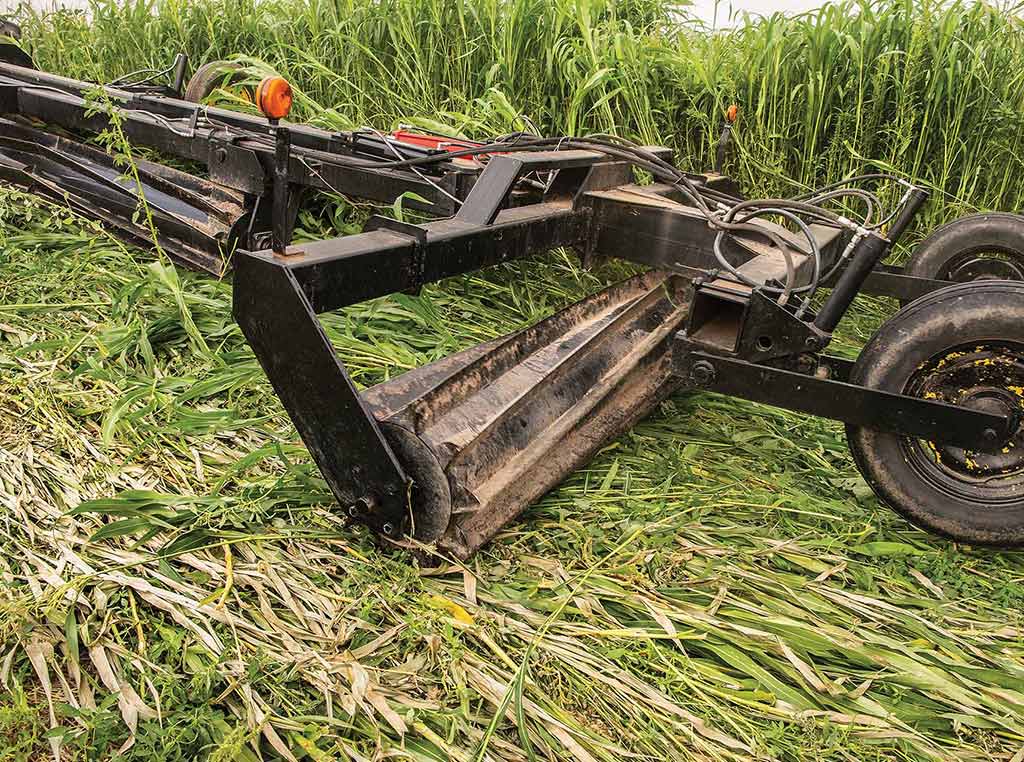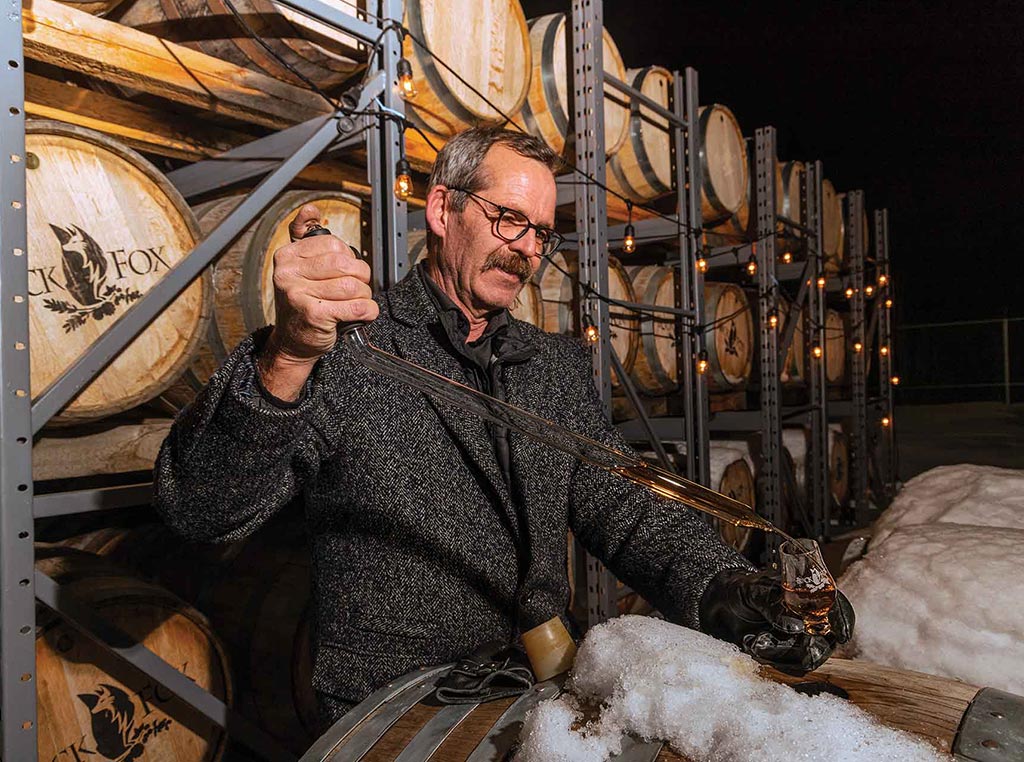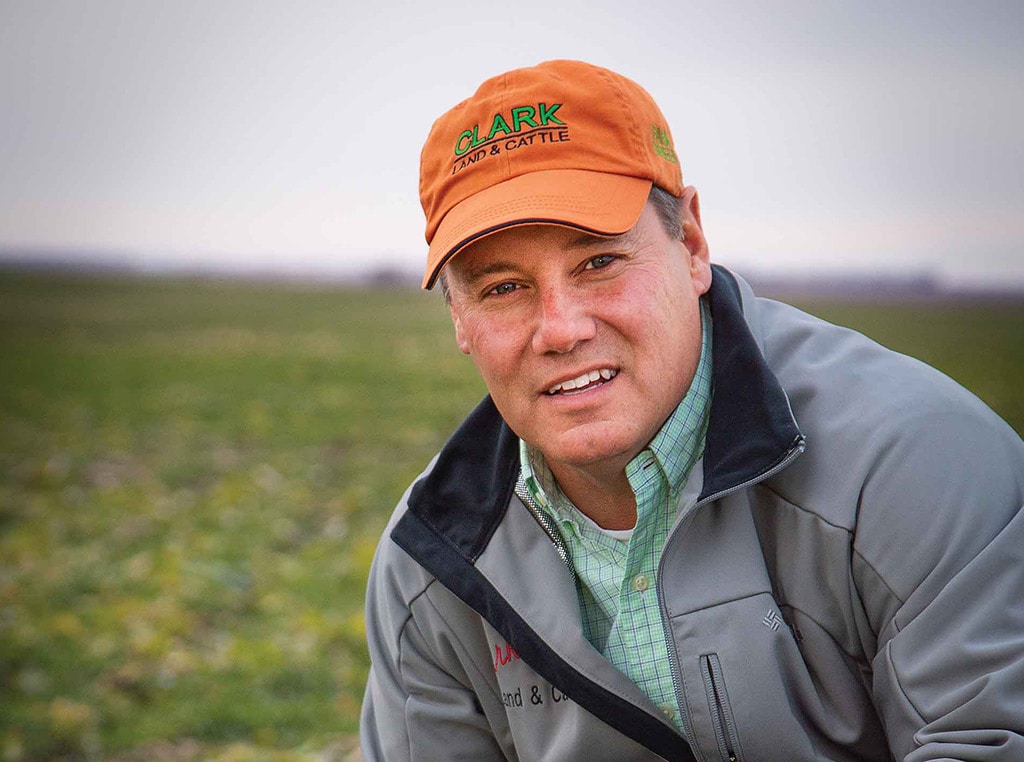Agriculture, Farm Operation November 01, 2022
Termination Timing
.
The benefits of cover cropping mount as termination is delayed.
Greeting cards and inspirational posters espouse the power of patience, but when Indiana, farmer Rick Clark uses the phrase, he's talking about the key to his success with regenerative agriculture.
"Cover crops play a major role in our operation," says Clark. "They suppress weeds, cycle nutrients, sequester carbon, control erosion, limit evaporation and produce biomass to protect the soil and feed the soil microbes. We've found they do all those things much better if you give them more time by delaying their termination in the spring—even if just for a few days."
Clark finds that extra time for cover crops to grow by planting corn and soybeans later than many of his neighbors and by planting green into growing cover crops. Then, he finds even more time by waiting a few days after planting corn and a few weeks after planting soybeans before terminating the cover crops.
"The last thing I want is to kill my cover crop the first nice day in the spring," says Clark. "Letting them grow as long as possible maximizes their benefits."
Clark proved this point to himself by analyzing samples of biomass clipped from his cover crop fields. The 2x2 foot samples were taken in sequence through the spring and submitted to a lab to determine the nutrient content.
"In early spring, when cereal rye (seeded at 80 pounds per acre) was 12 inches tall, there was 2,000 pounds per acre of biomass and it contained 82 pounds of nitrogen, 15 pounds of phosphorus and 76 pounds of potash. Just four days later, the rye had grown to 18 inches, the biomass had doubled and the N, P and K content had increased to 120, 20 and 128 pounds per acre respectively," says Clark.
At a height of 28 inches, biomass had increased to 6,800 pounds per acre, nitrogen content to 134 pounds, phosphorus to 30 pounds and potassium to 169 pounds. "In terms of commercial fertilizers, that amount of P equated to 64 pounds of 0-46-0 and the K to 281 pounds of 0-0-60."
A final biomass sample was taken of the dead rye two months after termination. "Much of the N (84 pounds) and most of the P (29 pounds) was still in that residue, but only 39 of the 169 pounds of K remained. That means 130 pounds of potash was released into the system—enough for our soybean crop even if only half is available," says Clark.

Growers are finding that delaying the termination of cover crops—either with a crop roller or a herbicide application—dramatically increases crop nutrient cycling and improves weed suppression.
Nitrogen for corn. A similar effort was done with samples from a Fixation Balansa Clover cover crop grown prior to corn. In mid-May the fall-seeded crop had 75, 30 and 133 pounds of N, P, and K respectively in 3,800 pounds per acre of biomass. Just 18 days later (June 8) 12,000 pounds of biomass contained 262 pounds of nitrogen, 87 pounds of phosphorus and 444 pounds of potash.
"Not all of that is available to the crop, but clover has a low C:N ratio so it breaks down quickly and if only half the N becomes available to the corn that's 131 pounds per acre—enough for a 140 bushel yield goal."
Weed control is another major benefit of delaying cover crop termination. Clark says he expects the thick mat of residue he creates by rolling down cover crops to control weeds for the first 70% of the season, long enough for his 20-inch rowed crops to canopy and suppress weeds for the final 30% of the year.
The combined benefits of cover cropping have allowed Clark to transition all 6,500 acres of his operation to certified organic production. "We've applied no P, K, or lime for 8 years, no longer use seed treatment, insecticide or herbicide and haven't applied nitrogen or manure for three years. Our yields aren't among the highest, but our costs are surely among the lowest," say Clark, who provides consulting services on regenerative agriculture practices through Farm Green Consulting (www.farmgreen.land).
Suppress weeds. Galva, Iowa, farmer Sam Bennett has also found that delaying cover crop termination pays. In a multi-year on-farm research project conducted with other members of Professional Farmers of Iowa, Bennett compared terminating a cereal rye cover crop at soybean planting to another date as much as 52 days after planting.
"In my case, we delayed termination to 27 days after planting and saw no yield loss to the soybeans," says Bennett. "However, there was a huge increase in the amount of biomass from the cover crop and that resulted in far less weed pressure. We've adopted this practice and it's saving us at least one and sometimes two herbicide applications. That's enough to pay for the cover crop seed, meaning all the other benefits are free."
Crop insurance and NRCS guidelines that require cover crops to be terminated on or before planting in some areas and before crop emergence in others is a hurdle to delayed termination. "The best approach is to just talk to RMA and NRCS personnel and let them know why you want to delay termination. We've gotten waivers this way, but it would be much easier if those agencies would just recognize the benefits of letting the cover crops grow longer and change their regulations," says Bennett. ‡
Read More

AGRICULTURE, SPECIALTY/NICHE
Overnight Success
Couple's farm distillery finds success beyond their dreams.

AGRICULTURE, EDUCATION
Lighting a Virtual Spark
High school students learn about trade careers through simulators.

